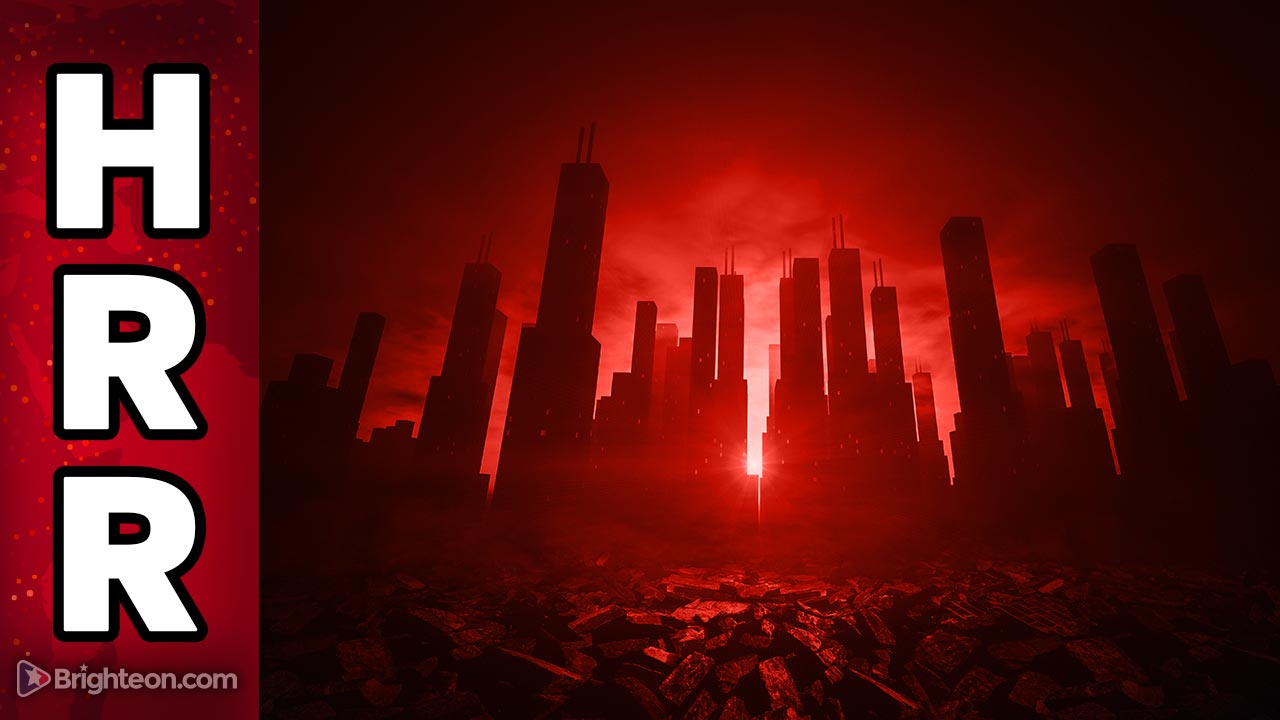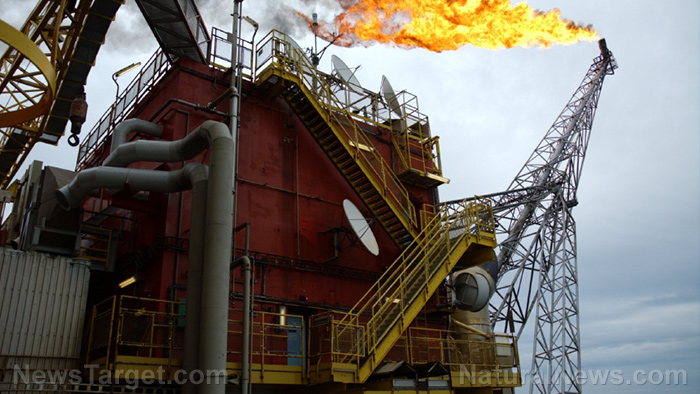Parts of the Middle East are becoming uninhabitable as it battles drought, high temperatures
08/26/2021 / By Nolan Barton

Parts of the Middle East are becoming uninhabitable as the region combats persistent drought and high temperatures. The ferries that once shuttled tourists to and from the little islets in Iran’s Lake Urmia are now sitting idly on what is rapidly becoming a salt plain.
Urmia was the Middle East’s biggest lake just two decades ago, with its local economy a thriving tourist center of hotels and restaurants.
“People would come here for swimming and would use the mud for therapeutic purposes. They would stay here at least for a few days,” said Ahad Ahmed, a journalist in the former port town of Sharafkhaneh as he confirmed CNN images of individuals having fun with the lake in 1995.
Drought in Middle East likely caused by humans
Lake Urmia has lost more than half its size – from 5,400 square kilometers (2,085 square miles) in the 1990s to just 2,500 square kilometers (965 square miles) today. There are legitimate concerns that the lake will disappear entirely.
Charles Iceland, the worldwide director of water on the World Resources Institute (WRI), said that some Middle Eastern countries are pumping huge amounts of water from the ground for irrigation as they seek to improve their food self-sufficiency. (Related: ‘Islamic State’ uses water to control population in dry Middle East – is this California’s future?)
“They’re using more water than is available routinely through rain. And so groundwater levels are consequently falling because you’re taking water out faster than it’s being replenished by the rainfall,” he said. “Both declining rainfall and increasing demand in these countries are causing many rivers, lakes and wetlands to dry up.”

Nothing has changed.
In 2016, researchers from the National Aeronautics and Space Administration (NASA) concluded that 1998 to 2012 were drier than any other period in the Middle East for at least the past 900 years, and that the drought was likely caused by humans.
The consequences of water becoming even more scarce are dire – areas could become uninhabitable; tensions over how to share and manage water resources like rivers and lakes could worsen; and more political violence could erupt.
Urmia has shrunk largely because so many people have exploited it. Some of the dams built in its basin mainly for irrigation have reduced the flow of water into the lake.
Drought affects water quality in Iran
Water woes are already a deadly issue in Iran. At least three protesters were killed in clashes with security officers in demonstrations against water shortages. Iran is experiencing some of the driest conditions in five decades, according to the country’s meteorological service.
The Middle East’s winters are projected to get drier the more the world warms. While the summers will be wetter, the heat is expected to offset its water gains.
“The problem is, with this whole temperature rise, whatever rainfall will come will evaporate because it is so hot,” Mansour Almazroui, director at Saudi Arabia’s King Abdulaziz University. “The other thing is, this rain is not necessarily going to be usual rain. There’s going to be extreme rainfall, meaning that floods like those happening in China, in Germany, in Belgium, these floods will be a big problem for the Middle East.”
These changes are not only having an impact on the amount of water available, but they are also affecting quality. Lake Urmia is hypersaline, which means it’s very salty. As it has shrunk, the salt concentration has increased and gotten so extreme that using it for irrigation is damaging farmers’ crops.
Kiomars Poujebeli, who farms tomatoes, sunflowers, sugar beet, eggplant and walnuts near the lake, said that the salty water has been disastrous. He added that the day the soil will become unfarmable is not far away.
Water scarcity could lead to conflicts
In Jordan, one of the most water-stressed countries in the world, people have become used to living with very little water. The country relies on the Jordan River system, which also runs through Israel, the West Bank, Syria and Lebanon.
Conflict has flared several times around the river system in the past. It’s a transboundary problem also seen in other parts of the region along the Euphrates and Tigris rivers, as well as in northern Africa along the Nile. Jordan, Israel and Syria have gotten better at coordinating the management of the river system they rely on, but tensions often erupt. Experts have long warned that water scarcity could lead to more conflict.
A study published in the Proceedings of the National Academy of Sciences showed that Jordanians will have to divide their per capita use of water by the end of the century. (Related: Taiwanese president appeals to constituents to conserve water as country faces severe drought.)
Most Jordanians on lower incomes will live on 40 liters a day for all their needs – drinking, bathing and washing clothes and dishes. The average American today uses around 10 times that amount.
“Jordan now has a critical shortage of water – water reaches the houses in Jordan once or twice a week, even in the capital Amman,” Daniel Rosenfeld, a professor with the Program of Atmospheric Sciences at the Hebrew University of Jerusalem. The capital actually has existential problems right now, already,” Rosenfeld said.
Studies show that groundwater levels in parts of the country are dropping by well over one meter a year. Waves of refugees from many countries in the region have put more pressure on the already stressed resource.
Water Authority of Jordan General Secretary Bashar Batayneh said that the country needs more funding from the rest of the world to deal with this increased demand for water.
“Jordan bore the heavy load of the Syrian refugee crises on behalf of the international community and was deeply impacted regarding water. Refugees cost the water sector over $600 million per year while Jordan received a fraction of this amount from the international community,” Batayneh said.
He added that Jordan had much less rain in 2020 than it did the previous year, putting more than a quarter of water resources at risk and halving drinking water sources.
Follow WaterWars.news for more news related to water and droughts.
Sources include:
Submit a correction >>
Tagged Under:
clean water, Climate, Drought, environment, Euphrates, Lake Urmia, Middle East, natural disaster, political violence, Tigris, Uninhabitable, water shortages, water supply, Water Wars
This article may contain statements that reflect the opinion of the author
RECENT NEWS & ARTICLES
COPYRIGHT © 2017 COLLAPSE.NEWS
All content posted on this site is protected under Free Speech. Collapse.news is not responsible for content written by contributing authors. The information on this site is provided for educational and entertainment purposes only. It is not intended as a substitute for professional advice of any kind. Collapse.news assumes no responsibility for the use or misuse of this material. All trademarks, registered trademarks and service marks mentioned on this site are the property of their respective owners.





















